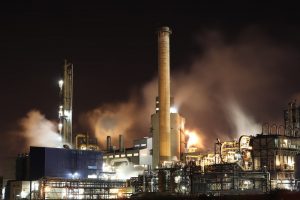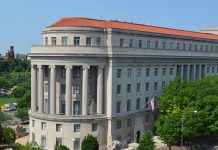After decades of failure, Congress finally managed to pass major federal climate legislation in 2022 with the Inflation Reduction Act (IRA), which includes nearly $400 billion in clean energy investments. Estimates suggest that, by 2030, these provisions would help the U.S. reduce its carbon pollution about 40% below 2005 levels — within striking distance of the Biden administration’s Paris Agreement commitment to 50% cuts.
However, a Princeton analysis has found that the IRA could actually cause the U.S. to burn more coal, if it’s not coupled with clean energy permitting reform, because the authors of the law assumed nothing would limit the rate at which clean energy projects would be deployed. Unfortunately, as it stands, the slow rate of construction of electric transmission infrastructure in the country will inevitably act as a bottleneck that will significantly slow the deployment of clean energy.
In the past decade, the U.S. has expanded its electricity transmission capabilities at the painfully slow rate of just 1% per year, which is only about half as fast as in prior decades. While the U.S. has built on average more than 10,000 miles of new natural gas pipelines annually in the past ten years, it has built just 1,800 new miles of electric transmission lines each year.
What’s more, building a single new transmission line takes over a decade on average, and 2030 is just seven short years away.
Energy modelers expect a tripling in American wind and solar generation capacity over those seven years thanks to an explosion in solar panel and wind turbine installations spurred on by clean energy tax credits. However, most of those wind and solar farms will be built in rural areas and in the windy middle of the country, and the electricity generated will need to be transported to households and businesses in big population centers in cities and along the coasts, which will require a lot of new transmission lines.
If the U.S. continues its 1% rate of annual transmission infrastructure expansion, only about 20% of the potential emissions cuts of the IRA would be realized, according to estimates from the Princeton modeling team.
In addition, the IRA incentivizes people to transition to electric cars, heat pumps, and induction stoves. But if the new clean energy sources are unable to connect to the grid, the increased electricity demand from these provisions would need to be met by burning more coal and gas.
If the U.S. fails to speed up its electric transmission infrastructure build-out, it will end up burning about 25% more coal in 2030 than it would have if the IRA had not passed, according to the Princeton team. This will result in thousands of extra premature deaths in disadvantaged communities living near fossil fuel power plant pollution sources.
Thus, it is crucial that Congress add to America’s capacity to transmit clean electricity and speed up the approval of clean energy projects that are waiting to be built by passing permitting reform legislation without delay.






















